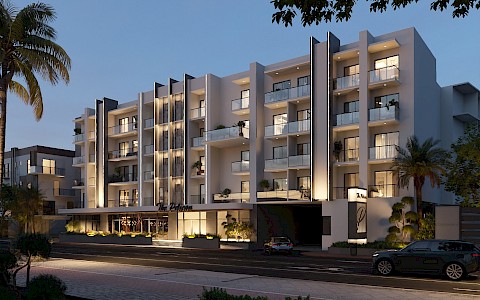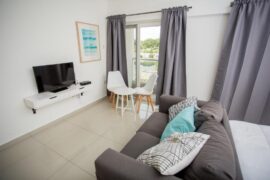Key Takeaways
- Understand land acquisition costs, which can account for up to 30% of your total budget, and conduct thorough property market analysis.
- Factor in construction expenses, including material and labor costs, while staying informed about market fluctuations for accurate budgeting.
- Incorporate architectural design trends, such as sustainable materials and open floor plans, to enhance appeal and functionality.
- Implement energy-efficient practices and renewable energy sources to attract eco-conscious tenants and reduce operating costs.
- Maintain a detailed budget management system with regular reviews, contingency funds, and community engagement to ensure project success.
Understanding Land Acquisition Costs
When diving into apartment building projects, understanding land acquisition costs is essential—these expenses can account for up to 30% of your total budget. To make informed decisions, you’ll need to utilize various land valuation methods, such as the sales comparison and income approaches. Each method provides different insights into a property’s potential value, helping you assess whether the land is a sound investment. Conducting a thorough property market analysis will also enhance your understanding of local trends and demand, ensuring you’re not overpaying. By combining these strategies, you can accurately estimate land acquisition costs and make more strategic financial decisions. This groundwork is vital to ensuring the project’s overall profitability and success in the competitive real estate market.Analyzing Construction Expenses
When you’re analyzing construction expenses, two major factors stand out: material costs and labor expenses. Understanding fluctuations in material prices can greatly impact your overall budget, while a detailed breakdown of labor costs helps you allocate funds more effectively. By closely examining these elements, you can make informed decisions that optimize your project’s financial performance.Material Cost Considerations
Understanding material cost considerations is essential for anyone looking to develop an apartment building, as these expenses can greatly impact your overall budget and project feasibility. Focus on material durability; it guarantees long-term value and reduces future repair costs. Choosing high-quality materials may seem pricey initially, but their longevity pays off over time. Additionally, explore cost effective sourcing options to trim your budget without compromising quality. Engage with multiple suppliers and consider bulk purchasing to secure better deals. By balancing durability with smart sourcing, you can optimize your investment and enhance the building’s appeal, making it more attractive to potential tenants. Keep these factors in mind, and you’ll pave the way for a successful development project.Labor Expenses Breakdown
Labor expenses typically account for 30-50% of total construction costs, making it vital to analyze these expenditures carefully. To control costs effectively, you need to stay informed about labor market trends. Understanding how wages fluctuate based on demand can help you budget more accurately and avoid unexpected expenses. Additionally, consider implementing project labor agreements (PLAs) to streamline hiring and stabilize costs. PLAs can help guarantee a steady workforce and minimize disputes, leading to a more efficient construction process. By proactively addressing labor expenses, you can enhance your project’s overall profitability and avoid pitfalls that might arise from labor shortages or high turnover rates. A thorough analysis of labor costs will ultimately strengthen your investment strategy.Material Selection and Its Impact on Budget
Choosing the right materials for your apartment building can greatly influence your overall budget and project viability. Effective material sourcing is essential; opting for locally sourced materials can reduce transportation costs and lead times, while ensuring quality. When you prioritize durability and efficiency, you may lower long-term maintenance expenses, positively impacting your budget forecasting. Additionally, consider the balance between initial costs and lifecycle value. While high-end finishes may attract tenants, they can strain your budget if not carefully planned. By analyzing your material options and understanding their financial implications, you can make informed decisions that align with your project goals. Ultimately, strategic material selection is key to maintaining a healthy budget and achieving a successful development.Accra Luxury Apartments Worth Every Cedi in 2025
Pursue the allure of Accra’s luxury apartments in 2025, where modern elegance meets smart living; discover what makes these spaces irresistible.
Key Architectural Trends in Apartment Design
As you explore key architectural trends in apartment design, consider how sustainable material usage, open floor plans, and smart home integration are reshaping the landscape. These elements not only enhance aesthetic appeal but also improve functionality and energy efficiency, making them essential for modern living. By prioritizing these trends, you can attract environmentally conscious renters and create a space that feels both spacious and technologically advanced.Sustainable Material Usage
While the demand for sustainable living continues to rise, incorporating eco-friendly materials in apartment design is no longer just an option—it’s a necessity. Developers must prioritize sustainable material usage to meet consumer expectations and regulatory requirements. Using eco-friendly alternatives, such as reclaimed wood, recycled steel, and low-VOC paints, not only reduces environmental impact but also enhances the building’s marketability. By sourcing renewable resources like bamboo and rapidly renewable insulation, you can greatly lower your carbon footprint. Furthermore, these materials often improve energy efficiency, ultimately saving residents money on utilities. Embracing sustainability not only fulfills ethical obligations but also positions your development as a leader in a rapidly evolving market, appealing to environmentally conscious tenants and investors alike.Open Floor Plans
Embracing open floor plans in apartment design not only enhances spatial flow but also maximizes the utility of available space. These layouts foster open space flexibility, allowing you to customize living areas according to your needs. By integrating kitchens, dining, and living spaces, you create an inviting atmosphere that encourages social interaction while adhering to modern design trends. This approach not only appeals to potential tenants but also increases the perceived value of your property. Furthermore, open floor plans can make smaller units feel larger and more functional, which is a notable selling point. As you consider your design strategy, remember that an open layout can greatly elevate your project’s appeal and marketability.Smart Home Integration
Integrating smart home technology into apartment design not only elevates the living experience but also aligns with the growing demand for convenience and efficiency. By incorporating smart technology, you can create spaces that cater to user convenience, making daily tasks seamless and intuitive. Features like smart locks, automated lighting, and climate control systems enhance security and comfort while reducing energy costs. Moreover, integrating these technologies can greatly increase your property’s appeal, attracting tech-savvy renters willing to pay a premium for modern amenities. As you design, consider the infrastructure required for robust internet connectivity and device compatibility. Ultimately, embracing smart home integration positions your development at the forefront of architectural trends, ensuring long-term value and satisfaction for residents.Balancing Aesthetics and Functionality
Balancing aesthetics and functionality in apartment building design is essential for creating spaces that not only look appealing but also serve their intended purpose effectively. You’ll want to carefully select design elements that enhance aesthetic appeal while ensuring a functionality balance that meets residents’ needs. Consider how layout, materials, and color schemes contribute to user experience; they should promote both comfort and practicality. Aim for community integration, where the building complements its surroundings, fostering a sense of belonging. Endeavor for visual harmony, ensuring that every feature—from balconies to landscaping—contributes to an overall cohesive look. By prioritizing both beauty and utility, you can create an inviting environment that attracts residents and enhances their quality of life.Accra Luxury Apartments The Gardens – Nature and Class Combined
Get ready to discover Accra’s premier luxury apartments at The Gardens, where nature meets elegance in a living experience like no other.
Incorporating Sustainable Practices
As you design apartment buildings, incorporating sustainable practices isn’t just an ethical choice; it’s a smart investment in the future. Embracing green building principles enhances energy efficiency, reducing operating costs for residents. Choose eco-friendly materials to minimize environmental impact and support waste reduction initiatives during construction. Implementing renewable energy sources, like solar panels, can markedly lower the carbon footprint of your buildings. Additionally, consider integrating sustainable landscapes that promote water conservation through native plants and efficient irrigation systems. By prioritizing these practices, you not only create appealing living spaces but also attract environmentally conscious tenants. Ultimately, sustainable design contributes to a healthier planet while ensuring long-term value for your investment. Make the choice to build responsibly; your future tenants will thank you.
Navigating Zoning and Regulatory Requirements
Sustainable practices set the stage for thoughtful design, but to bring your vision to life, understanding zoning and regulatory requirements is key. You must navigate zoning restrictions that dictate land use, building heights, and density. Familiarizing yourself with local ordinances not only saves time but also avoids costly delays. Regulatory compliance isn’t just a box to check; it’s essential for ensuring your project aligns with community goals and standards. Engage with local planning departments early in the process to clarify requirements and seek feedback. This proactive approach can help you identify potential hurdles and streamline approvals. By prioritizing these elements, you position your project for success while fostering a harmonious relationship with the community you aim to serve.Strategies for Effective Budget Management
Effective budget management is essential for the success of your apartment building project, especially when unexpected costs can quickly derail your plans. Start with accurate budget forecasting to anticipate expenses and set a realistic financial framework. Break down your budget into specific categories, allowing for clearer expense tracking. Regularly review your expenditures against your forecasts to identify discrepancies early. Utilize budgeting software for real-time tracking, enabling you to adjust your plans promptly. Involve your entire team in budget discussions to foster accountability and transparency. Additionally, maintain a contingency fund to cushion against unforeseen expenses. By implementing these strategies, you’ll guarantee financial discipline and enhance the likelihood of completing your project on time and within budget.Acasia Apartments Cantonments Luxury Living in the Heart of Accra
Unlock the door to luxury living at Acasia Apartments, where modern design meets vibrant community—discover what makes this urban oasis truly exceptional.
Frequently Asked Questions
What Financing Options Are Available for Apartment Building Projects?
When exploring financing options for your apartment building projects, consider both equity financing and debt financing. Each offers unique benefits; equity financing brings investors on board, while debt financing provides leverage to enhance your returns.How Do I Determine the Optimal Apartment Unit Mix?
To determine the ideal apartment unit mix, analyze market trends and demand. Assess unit size preferences and demographics, ensuring your design aligns with local needs. This strategic approach maximizes occupancy rates and boosts overall profitability.What Are Common Pitfalls to Avoid in Apartment Development?
When developing apartments, avoid budget overruns and design miscalculations. These pitfalls can derail your project. Carefully plan your finances and double-check designs to guarantee you stay on track and meet your project’s goals effectively.How Can I Effectively Market My New Apartment Building?
To effectively market your new apartment building, leverage digital marketing strategies tailored to your target audience. Utilize social media, engaging content, and targeted ads to showcase unique features and attract potential tenants, maximizing your reach and impact.What Role Does Community Engagement Play in Development Success?
Community engagement fosters development success by encouraging resident involvement and gathering valuable community feedback. When you actively involve residents, you build trust, enhance satisfaction, and create a sense of ownership, ultimately leading to a thriving community.Conclusion
In traversing the complexities of apartment building costs and design, you’ve gained critical insights into budgeting and architectural trends. By understanding land acquisition, construction expenses, and sustainable practices, you can make informed decisions that balance aesthetics with functionality. Remember, effective budget management is key to a successful project. Embrace these strategies to create appealing living spaces that meet regulatory standards while maximizing your return on investment. Your diligence now will pay off in the long run.Discover more from Ghana Scoop
Subscribe to get the latest posts sent to your email.





